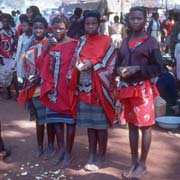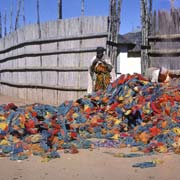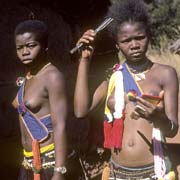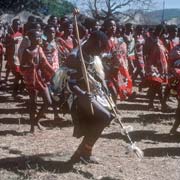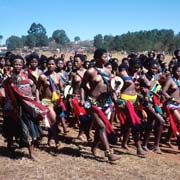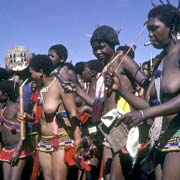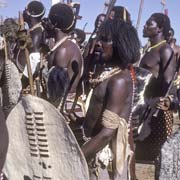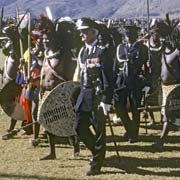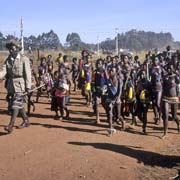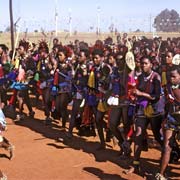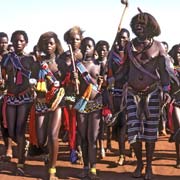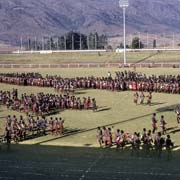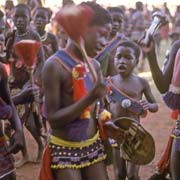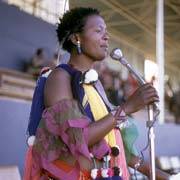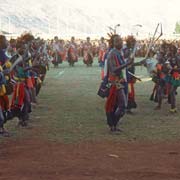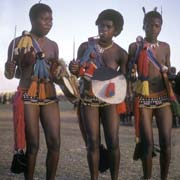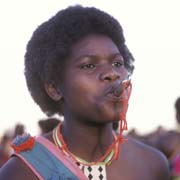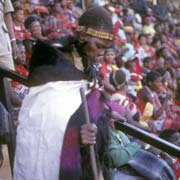Photos of the uMcwasho Ceremony, Swaziland
The uMcwasho Ceremony
In Swaziland boys are organised in age-groups that form the basis of the traditional warrior regiments. A similar thing sometimes happens with unmarried girls who join together under the patronage of a princess or chief's daughter and wear the "umcwasho" uniform, colourful tassels indicating their status: the younger girls who may not yet have a boyfriend wear blue and yellow woollen tassels, tied to a string of beads around their head while the older ones who already have a boyfriend wear red and black.
you may then send it as a postcard if you wish.
The uMcwasho is basically a chastity rite and during this time, that may last a number of years, they have to obey special laws regarding clothing, food, morals and behaviour: they may have no physical contact with boys and any boy who violates this has to pay a fine, traditionally a cow. If he refuses, the girls come together in a group, march, singing and dancing, to his house, dance around it and hang their "umcwasho" tassels on the door to mock him so everyone can see who the culprit is.
At the end of this period a colourful ceremony is held in which they discard their woollen tassels. Held in late August, this ceremony may be held instead of the "uMhlanga" or Reed Dance that is usually held around this time. The girls come together in the Royal residence of Lobamba and, early in the morning, they throw down their tassels in a big pile. Old women retrieve the beads from the strings that were used to tie the umcwasho to their heads and then the whole pile is set ablaze: the girls are now free again: those who had been wearing blue and yellow may now have a boyfriend and those who had red and black may marry or change boyfriends!
After the girls have bathed in the river and prepared themselves in their traditional finery, wearing the short "indlamu" bead skirt, necklaces and colourful sashes, they march, singing and dancing as they go along, towards Somhlolo National Stadium on the other side of the highway; all traffic has to stop until the hundreds of girls have crossed the road. They continue dancing in their groups on the grounds near the stadium until it is time for them to enter.
They now march into the Stadium, preceded by groups of warriors. Large groups of men, in their traditional "emabutfo" regiments, carrying large shields and "sakila" knobkerrie fighting sticks or battle axes march with the girls into the Stadium, the girls still singing, dancing and blowing metal "police" whistles.
There are hundreds of girls dancing and they are joined by some of the traditional regiments; the King also dances with his Balondolozi regiment. The whole Swazi cabinet may be there, the ministers all in traditional dress with their wives and children. It is an incredible sight, with hundreds of girls singing and dancing until sunset. As in the "uMhlanga" or Reed Dance ceremony, the King may choose one of those girls as a new wife. For the others, they go back to their homes, now free to either take a boyfriend or marry.





